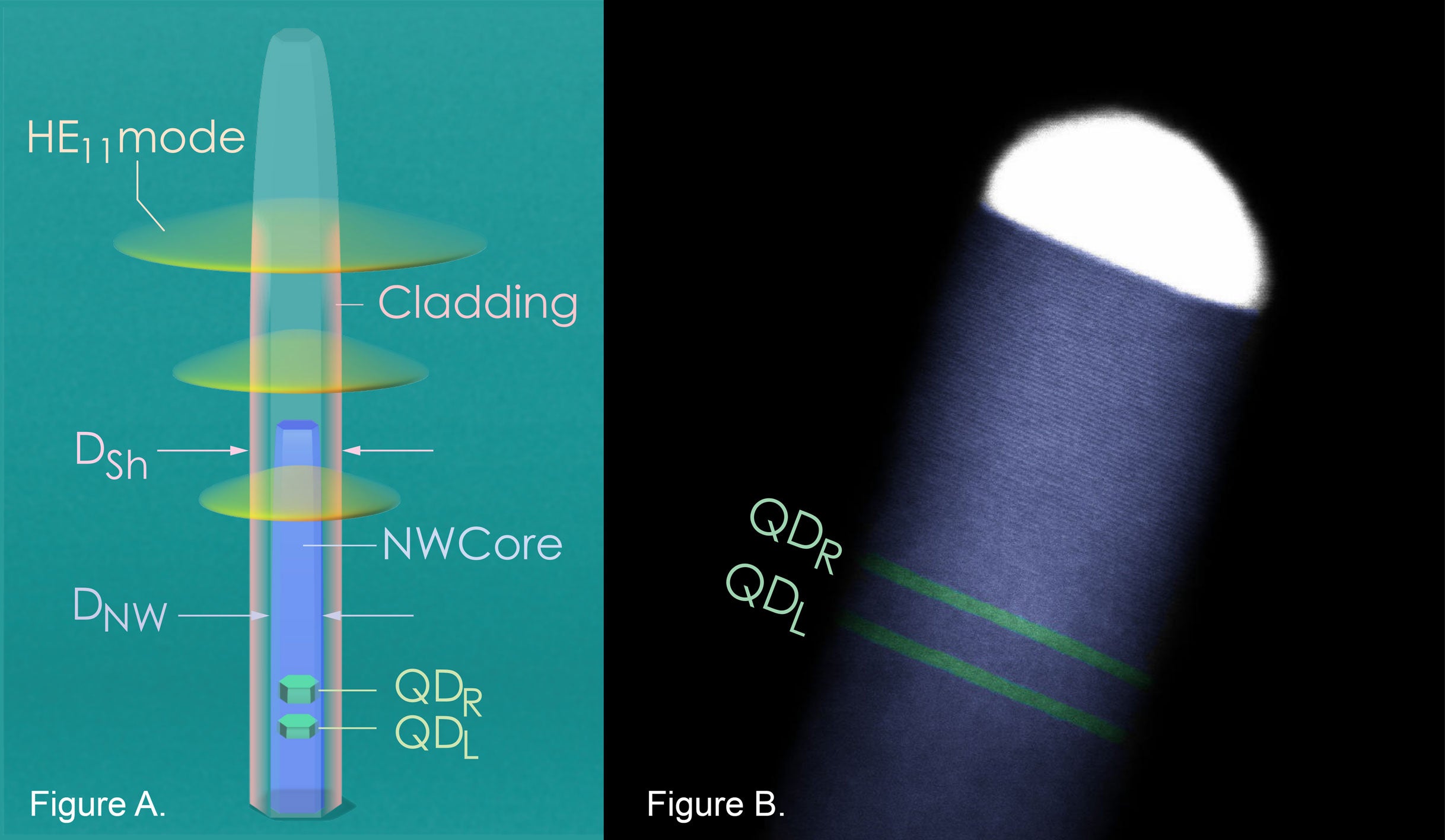Researchers experimentally demonstrated the creation of photon triplets, correlated by time, using a quantum dot molecule. This is the first step in generating entangled photon triplets in a solid state system, which could be useful for quantum communication protocols, as well as third-party cryptography.
The team, including Institute for Quantum Computing (IQC) postdoctoral fellow Milad Khoshnegar and IQC associate Gregor Weihs, recorded an average of 65.2 photon triplets emitted per minute, the highest detection rate so far. To create the photon triplets, the researchers sent picosecond pulses of light into a photonic nanowire and through a pair of quantum dots and into the quantum dot molecule. The researchers formed a quantum dot molecule by tunneling between the two individual quantum dots, which are semiconductor nanostructures that confine the motion of electrons.

Figure A: The schematic of a quantum dot molecule (QDM) embedded inside a clad nanowire. Figure B: False-coloured scanning electron microscopy image of a nanowire incorporating a single quantum dot molecule.
In a quantum dot, a photon begins as an electron-hole pair called an exciton. The exciton undergoes a transition in the quantum dot, where it loses its energy and emits a single photon. To obtain correlated photons, the excitons must “talk” to each other, which happens when there is spatial overlap of the exciton orbital states.
“In separate quantum dots, the orbitals of different excitons have no spatial overlap,” explained Khoshnegar, who proposed the idea of using a quantum dot molecule system to generate higher-order photon correlations. “In a quantum dot molecule, the orbitals of excitons do spatially overlap and lead to the emission of correlated photons from different transitions.”
Next, the researchers conducted a triple coincidence experiment using a time-tagging device combined with three photon detectors to measure the photon output, confirming the photon triplets were in fact correlated by time. “The information about the arrival time of each photon revealed that the three photons were indeed emitted as a triplet, in contrast to three independent events,” said Tobias Huber, a postdoctoral fellow at the National Institute of Standards and Technology.
“So far, the direct generation of entanglement has been limited to photon pairs in solid state systems,” said Khoshnegar. “The experimental results here will pave the way for the direct generation of multi-photon entanglement.” Another advantage of using a solid-state system, like a quantum dot, is the ability to directly generate photon triplets without introducing post-selection techniques and the potential scalability to help with miniaturizing on-chip quantum emitters.
The collaboration, A solid state source of photon triplets based on quantum dot molecules, by Khoshnegar, Weihs, Huber and others from the University of Waterloo, Universität Innsbruck, National Research Council of Canada and Université Bordeaux was published June 12 in Nature Communications.